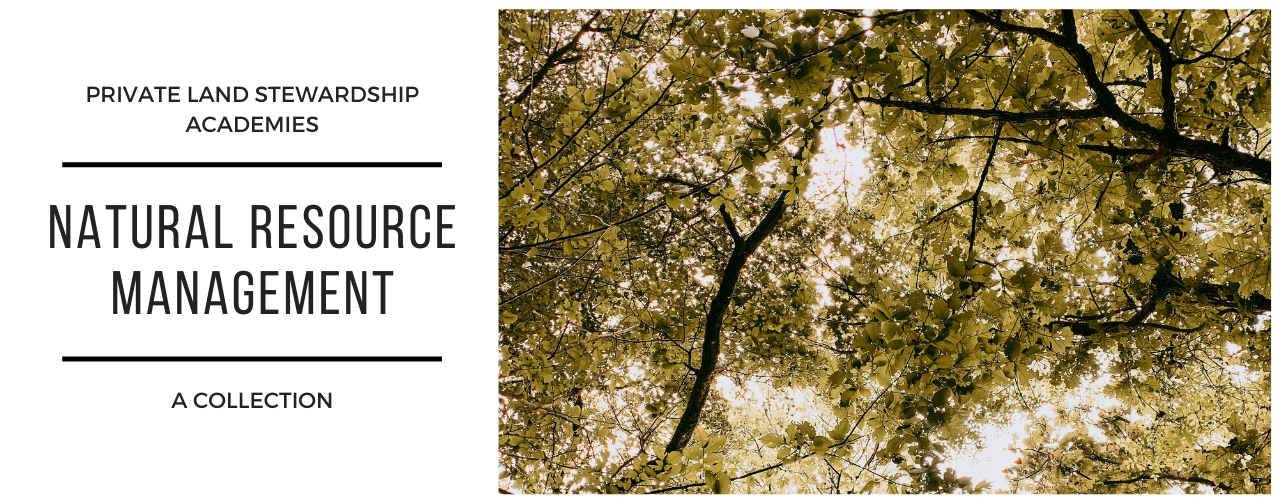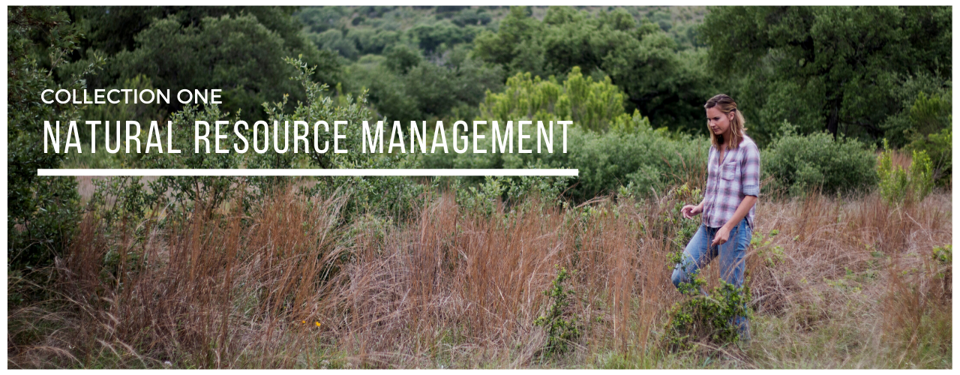

Private Land Stewardship Academies: Natural Resource Management
We're building a community of practice around land stewardship for outdoor enthusiasts and private landowners alike with interactive publications developed from materials created during face-to-face training and presentations. These private land stewardship publications are meant for everyone from the classroom to the field. They meet the learner where and how they want to explore the information.
Since the launch of these interactive publications, we've seen our communities band together to recreate education so that it can be available in new ways. These virtual publications came about as a charge to take existing materials from previous presentations, from flash drives, or publications collecting dust on shelves, and shake them up so that anyone on the other side of a screen anywhere in the world could access them.
You can find and share these anytime. Click, open, explore, shuffle through the content and save up the information. You can quiz your knowledge gained at the end; a great component for classrooms and youth learning environments especially.
We're excited to share four collections with you in the coming weeks—first up: Natural Resource Management.
How to Find Natural Resource Professionals in Texas
When looking for natural resource conservation and management guidance, go to trusted organizations for reliable information. Some of the most valuable groups Texans can utilize include Texas A&M AgriLife Extension Service, Texas A&M Forest Service, Texas Parks & Wildlife, and the Natural Resources Conservation Service. We laid out each organization's expertise, programs and how to get in touch with their professionals in the PLS deck How to Find Natural Resource Professionals in Texas. Find your expert and add them to your contact list; they are there to serve as a guide and they're the best around.
Ten Things Landowners in Texas Need to Know
Landownership is a responsibility like none other, and many say the heart of great land stewardship starts at the soil. No matter the purpose of a piece of property, knowing the ins and outs of a specific piece of land will allow landowners to prescribe the best management practices for healthy land. In this deck, landowners will learn the most efficient ways to get in touch with their specific natural resource exert for soil, water, and forestry resources to effectively manage their property.
How to Construct Wildlife Ramps
Many wildlife species, including sage-grouse, are known to accidentally drown in stock tanks that do not have adequate escape ramps. The good news is that effective wildlife escape structures are easy and inexpensive to build and can virtually eliminate wildlife mortality in water troughs or wherever water is collected and stored. In the PLS deck How to Construct Wildlife Ramps landowners can learn how to construct ramps in stock tanks or other like structures holding water to eliminate wildlife mortality and improve livestock health—sounds like a good weekend project.
How to Map with the Map My Property Tool
The Texas A&M Forest Service's Map My Property Tool is an excellent resource for landowners who want to better visualize their property and make smart land management decisions. Our tutorial videos provide information on the functions within the tool and how they can be used to create an accurate, informative map of the land and its resources.
The Texas Quail Index
Learn how to conduct the Texas Quail Index (TQI) on your own property. The TQI is a statewide monitoring program for quail populations and resources, consisting of 5 simple demonstrations throughout the year. In this tutorial, we'll explain the hows and whys of each demonstration and provide you with everything you need to get started.
Wild Pigs Negatively Impact Water Quality: Implications for Land and Watershed Management
Introduced to North America in the 1500's as a reliable food source by early European settlers, free-ranging domestic pigs established initial feral populations. Later, Eurasian wild boar released onto hunting preserves in the early 1900's escaped and hybridized with free-ranging pig populations. Intentional (illegal) and accidental releases since have further contributed to wide-ranging and growing wild pig populations.
While difficult to quantify monetarily, wild pigs impact water quality directly through bacterial impairment and indirectly through the degradation of riparian habitat. This deck provides an overview of some of the impacts wild pigs have on water quality based on their behavior, biology and preferred habitat.
Wildlife Management as Agricultural Use for Property Tax Valuation in Texas
Using wildlife management as an agricultural practice to qualify for the 1-d-1 Open Space Agricultural tax appraisal in Texas is relatively easy to switch from traditional agricultural uses such as cattle or hay production. The enjoyment associated with managing for wildlife makes the change in land use management worthwhile for many landowners. This deck outlines the purpose and process of managing wildlife as an agricultural resource.
Learn More
Private Land Stewardship Academies
Training land stewardship professionals working with private landowners and educating a community of practice on the importance of science-based conservation. Click Learn More for free access to resources.








